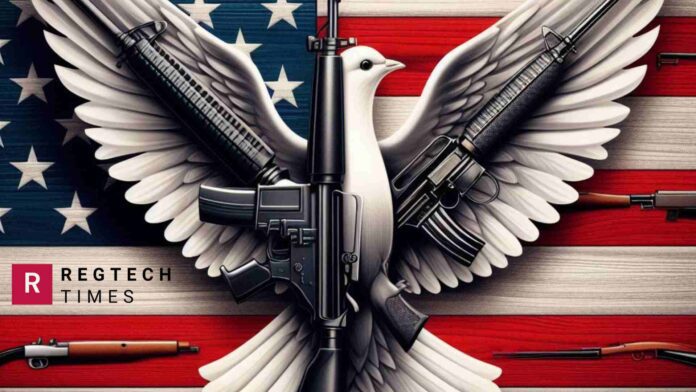To address the use of U.S.-made civilian guns in crimes and human rights abuses abroad, the Biden administration has announced new regulations that will significantly impact the export of firearms.
The decision to implement these regulations comes after a Bloomberg News investigation last year linked record civilian gun exports from the U.S. to higher rates of gun crime in countries such as Guatemala, Brazil, and Canada. The investigation revealed how legally exported weapons were being used in various crimes, including massacres and political assassinations, prompting concerns about the need for stricter export controls.
Key Changes in the Regulations
There are four primary changes in the regulations related to the export of firearms. These four changes are
Tightened Sales and Vetting Processes
Under the new regulations, exporters of U.S.-made firearms will face stricter requirements when vetting their customers. This means that exporters must conduct more thorough background checks and due diligence on potential buyers to ensure they are legitimate and not involved in illicit activities. Sales to high-risk countries, where there is a greater likelihood of firearms being diverted for illegal purposes, will face even stricter scrutiny. Exporters will need to exercise caution and vigilance when selling to these countries to prevent the misuse of firearms.
Reduced License Length
Another significant change is the reduction in the length of export licenses. Previously, export licenses were valid for four years, but under the new regulations, they will only be valid for one year. This means that exporters will need to renew their licenses more frequently, adding an additional layer of oversight and ensuring that they continue to meet the necessary requirements for exporting firearms.
Greater State Department Authority
The State Department will now have increased authority to block sales of firearms. This means that if the State Department determines that a particular export transaction poses a risk of contributing to illicit activities or human rights abuses, it has the power to prevent the sale from going through. This gives the State Department a greater role in regulating the export of firearms and ensuring that they are not used for illegal purposes.
Inter-Agency Review Process
The new regulations also establish a new inter-agency review process led by the State Department. This process will examine export applications that raise potential human rights concerns. This means that any export application involving countries or entities with a history of human rights abuses will undergo additional scrutiny to ensure that the export of firearms does not contribute to or exacerbate these abuses. The goal of this process is to ensure that U.S. export of firearms are not used to perpetrate human rights violations or support oppressive regimes.
Impact on the U.S. Firearms Industry
Export of Firearms
These regulations, described as the most sweeping in decades, aim to tighten sales processes and vetting of customers, particularly in 36 countries deemed “high-risk” for the illicit diversion of semiautomatic firearms.
The list of countries deemed high risk includes many where the influx of U.S.-made weapons has been linked to widespread violence, including Vietnam, Jamaica, Indonesia and Pakistan as well as countries in the Organization of American States, which includes much of Central and South America.
But the high-risk list omits several places where U.S. guns have been tied to violent gangs or human rights violations, such as Mexico, Thailand, the Philippines and Saudi Arabia.


